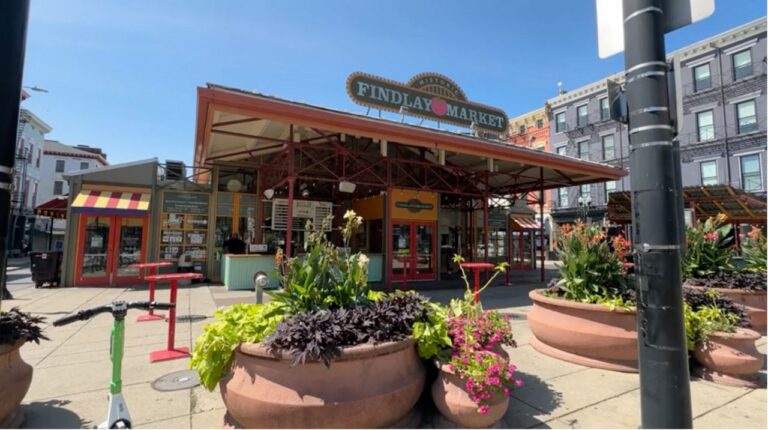CINCINNATI — A new economic impact report reveals that Cincinnati’s historic Findlay Market is more than just a cultural landmark — it’s a major economic engine contributing hundreds of millions of dollars to the local economy.
The study, conducted by the Corporation for Findlay Market in partnership with the Cincinnati Regional Chamber, found that from 2021 to 2023, the market generated more than $370 million in economic impact, supported over 1,000 jobs and welcomed more than 1.4 million visitors annually.
“We’re mostly the same as when we opened the doors 173 years ago,” said Kelly Lanser, president and CEO of the Corporation for Findlay Market. “We are still a fresh food market, which is a significant difference between us and some other public markets around the country.”
A Longstanding Anchor in a Growing Neighborhood
Nestled in the heart of Over-the-Rhine, one of Cincinnati’s most rapidly redeveloped neighborhoods, Findlay Market has been a fixture since 1852. Despite changes around it, the market has remained a consistent source of fresh food and community engagement.
For local entrepreneurs like Tonica Chavez, co-founder of ETC Produce & Provisions, the market has been instrumental in building a thriving business.
“I love food, and I love people,” Chavez said. “Being able to connect the two together is like my life mission all in one.”
Chavez and her husband, Estevan, started ETC after traveling the U.S. through the World Wide Opportunities on Organic Farms (WWOOF) program. Today, they buy weekly from more than 150 local farmers and artisans and operate a second location in Cincinnati’s Walnut Hills neighborhood.
“We’re giving you the best tomatoes, the best avocados, and making sure that you’re getting those farm-fresh eggs every single day of the week,” Chavez said.
New Data, Growing Impact
The recent study is the first of its kind focused on the market’s economic contributions. Using survey data from 49 vendors, analysts at the Chamber’s Center for Research & Data created a model to assess the market’s direct and surrounding impact.
“Over a five-year period, we found that the development impact around the market topped $1 billion, creating over 4,000 additional jobs,” said Brandon Rudd, director of the Chamber’s research center.
By 2026, the market’s impact is projected to grow to $483 million, according to the report.
“Independent of things like inflation or the broader macro economy, the area around Findlay Market and the market itself are performing really strongly,” Rudd added.
Modernizing While Preserving Tradition
To stay relevant, the market has evolved from launching an e-commerce shopping app during the pandemic to supporting hundreds of startups through initiatives like Findlay Kitchen, a food business incubator.
“We’ve seen more than 280 businesses start out of Findlay Kitchen,” Lanser said. “Programs like that have helped change the face of the entrepreneur.”
ETC Produce is among those success stories. Chavez credits the market community and loyal customers for their growth.
“Maybe there’s a third [location] in the future, maybe there’s a fourth,” she said. “Being able to push our growth and transform our community is really what we want to do.”
Looking ahead, Findlay Market is preparing to celebrate its 175th anniversary in 2027, another milestone for a market that has long been the heart of Cincinnati’s public life and economy.


